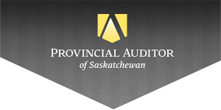December 4, 2019
Providing Timely Access to Mental Health and Addictions Services — June 2018

What is this audit about?
Every year, approximately 1 in 5 Canadians experiences a mental illness (a disorder affecting mood, thinking, and/or behaviour). Some of the more common illnesses are depression, anxiety, and substance abuse disorders. Mental illnesses and addictions are associated with distress and impaired functioning. Those affected can use significant resources from health and social systems.
The 2018 audit of the Provincial Auditor of Saskatchewan focused on mental health and addictions services provided by the former Prince Albert (PA) Parkland Health Region (now part of the Saskatchewan Health Authority). Located in central Saskatchewan, this region covered an area of about 29,000 square kilometres, with Prince Albert being the major city in the region. Prince Albert is the third-largest city in Saskatchewan, with a population of around 40,000. It is the last major centre along the way to northern Saskatchewan.
PA Parkland had the third-highest number of active outpatient mental health clients (after the former Regina and Saskatoon health regions). PA Parkland’s mental health clients accounted for approximately 11% of total clients across the province (3,969 of 35,196 in the 2015–16 fiscal year). In the 2016–17 fiscal year, PA Parkland spent $13.2 million on mental health. It had the second-highest spending per capita on mental health in the province after the Prairie North Health Region. In addition, in 2015–16, PA Parkland had the third-highest alcohol and drug treatment admission rates for both youth and adults, the third-highest rate of injection drug users, and the third-highest rate of addictions outpatient service use.
For those with severe and persistent mental illness, ready access to continuity of care has long been considered essential for good outcomes. Continuity of care is associated with improved quality of life, community functioning, and satisfaction with services. Mental health and addictions clients getting the right treatment at the right time is important to recovery.
This audit examined whether the Saskatchewan Health Authority had effective processes (for the 12-month period ending 31 January 2018) for providing timely access to mental health and addictions services in the former Prince Albert Parkland Health Region.
What did the audit find?
The audit reported that the demand for mental health and addictions services in the former PA Parkland Health Region was outpacing its capacity to supply them. Its mental health inpatient beds were often full, and it sometimes turned clients looking for detox services away. Wait times for clients exceeded PA Parkland’s targets. For example, in 2017, about 80% of child and youth clients rated with moderate illness severity did not see a psychiatrist within the target of 20 days. In addition, 14% of files tested of clients accessing mental health outpatient services waited longer than the triage rating would suggest. For example, one client had their first appointment booked 79 days past the target date. Long waits for clients with mental health issues can lead to worsening conditions and, at times, significant adverse effects.
The audit found that PA Parkland was in the beginning stages of putting in a provincial IT mental health system, and only starting to move away from manual records. Separate physical client files were kept at its various service areas (such as detox and mental health inpatient), which, in many cases, led to having multiple files for the same client. The content of these files was not shared within the region. Not having a single file can impede treatment for clients and create inefficiencies in the provision of care.
Furthermore, PA Parkland did not have access to information about mental health and addictions services provided by other publicly funded health care providers, such as family physicians. This reduced PA Parkland’s capacity to provide appropriate treatment and assist in the continuity of care.
Also, the audit found that up to 39% of mental health and addictions clients did not show up to appointments. PA Parkland could not demonstrate it followed up with clients who missed scheduled appointments to assess their health status. Missed appointments disrupt continuity of care, and waste staff capacity.
What difference did the audit make?
The audit received wide coverage in the media and strongly resonated with the population. Many articles and news stories provided examples of specific situations observed in the community and used the report and quotes from the Provincial Auditor, Judy Ferguson, in her news conference to highlight the areas that needed to improve the provision of timely mental health and addictions treatments.
The audit made recommendations to the Saskatchewan Health Authority to:
- Formally assess whether mental health and addictions services are meeting client demand and make necessary adjustments.
- Implement a provincial integrated mental health record electronic system.
- Develop a strategy to collect key mental health and addictions client information from health care professionals for the provincial integrated mental health record system.
- Identify and analyze patterns of clients who frequently use mental health and addictions services.
- Collaborate with the Ministry of Social Services to enhance access to housing options for mental health and addictions clients.
- Use a model to assist staff in better matching appropriate services to mental health and addiction clients’ needs.
- Require staff to document post-detox support.
- Assess alternatives to decrease the number of mental health and addictions patients who do not show up for scheduled appointments or treatment, such as calling clients to remind them of upcoming appointments.
- Document evidence of follow-up when clients do not maintain their scheduled mental health and addictions treatment.
- Accurately track and report wait times to access outpatient mental health and addictions services.
The Public Accounts Committee of Saskatchewan met to discuss this report and concurred with the recommendations while noting that the Saskatchewan Health Authority was making progress toward complying with them. Since the publication of the report, the provincial government has announced substantial new investments in mental health and addictions in the 2019–20 budget.
What can we learn from this audit?
 |
A small audit can address a substantial topic if managed efficiently |
 |
Topic selection is not only about big spending programs but also about the citizens more at risk of not getting the treatment they need |
 |
Auditing while organizational changes are implemented could be challenging |
 |
The role of other entities, when relevant, must be recognized |
 |
Providing the source of audit information can strengthen the credibility of an audit report |
See more Featured Audits



